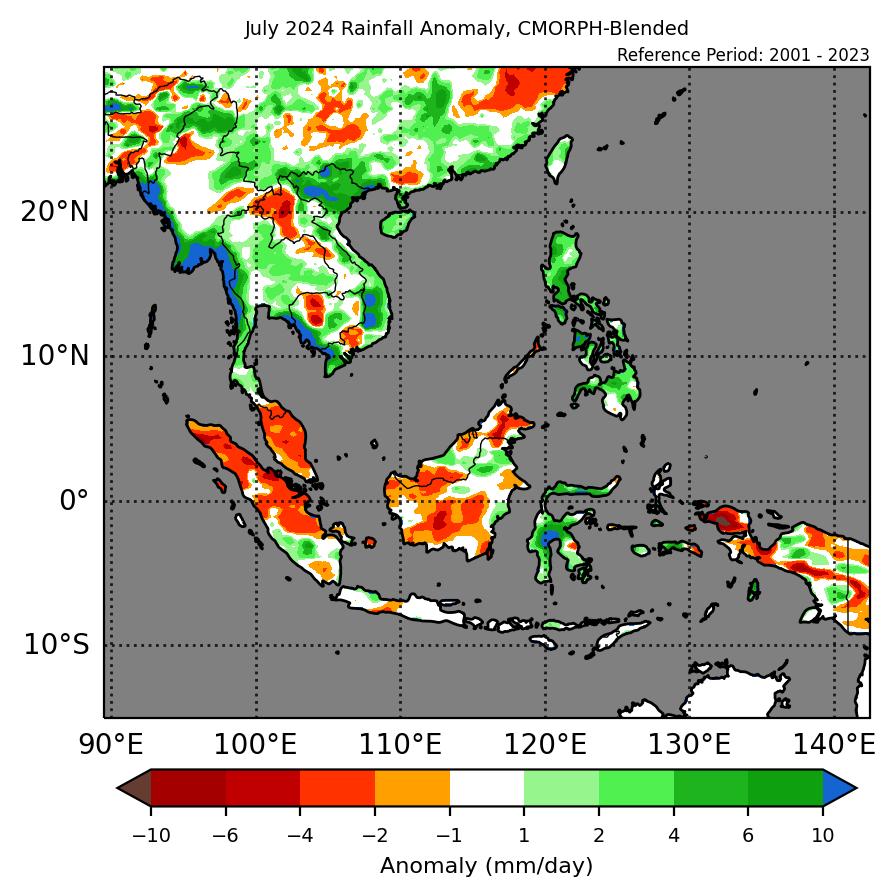Review of Regional Weather for July 2024
1. Overview
1.1 During July 2024, below-average rainfall was recorded over parts of the southern ASEAN region, in particular over the equatorial region, while above-average rainfall was recorded over parts of the central equatorial region and near-average rainfall over the southernmost region (Figure 1). For the northern ASEAN region, above-average rainfall was recorded over eastern and southern Mainland Southeast Asia as well as over the Philippines, while a mix of below- to above-average rainfall was recorded over northern Mainland Southeast Asia. The largest positive (wetter) anomalies were recorded over southern coast of Myanmar based on GSMaP-NRT (Figure 1, left) and CMORPH-Blended (Figure 1, right) satellite-derived rainfall estimates. In contrast, the largest negative (drier) anomalies were recorded over northern Sumatra (in both GSMaP-NRT and CMORPH-Blended).
1.2 The observed rainfall anomaly pattern of above-average rainfall over parts of the southern Mainland Southeast Asia coupled with below-average rainfall over parts of the equatorial region are broadly consistent with the predictions from the subseasonal weather outlooks for July 2024 (24 June – 7 July 2024 , 8 – 21 July 2024 and 22 July – 4 August 2024).
1.3 Above-average temperatures were recorded over most of the Maritime Continent and northern Mainland Southeast Asia (Figure 2) in July 2024. The exceptions were over central and southeastern Mainland Southeast Asia, where below-to near-average temperature was recorded over parts of eastern Thailand, Cambodia and Vietnam. The warmest anomalies (more than 1°C above average) were recorded over Sumatra.
2. Climate Drivers
2.1 The Madden-Julian Oscillation (MJO) was present over the Indian Ocean (Phase 3) for the first week of July based on the RMM index (Figure 3). The MJO signal weakened and became indiscernible for much of the rest of July, except during mid-July when an MJO signal emerged briefly for a few days over the Maritime Continent (Phases 4 and 5). Typically for July, Phases 3 and 4 tend to bring wetter conditions to the Maritime Continent and southern Mainland Southeast Asia, and Phase5 tends to bring wetter conditions to the eastern Maritime Continent.
2.2 The tropical Pacific was in an ENSO neutral state during July, although the lingering effect from the El Niño still likely contributed to the warmer temperatures observed in Figure 2.





